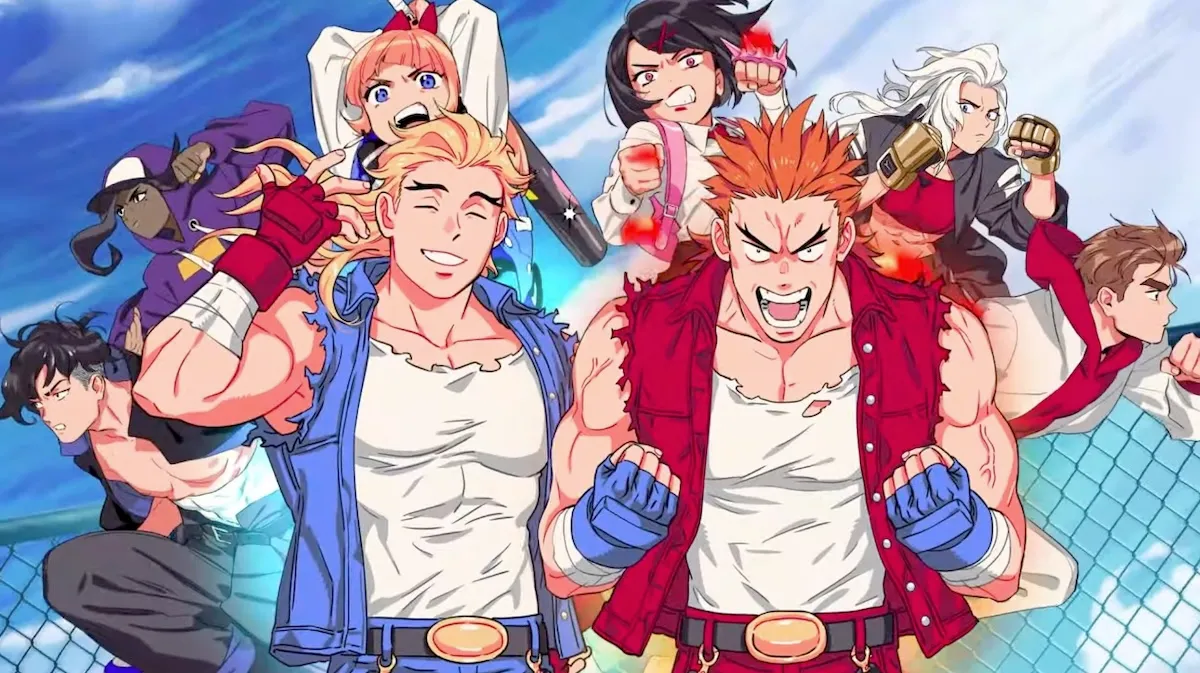
If you put Peter Molyneux, Ken Levine, Louis Castle, Rusel DeMaria and Chris Taylor — who looks exactly like Paul Gross — in a room for an hour and then ask them to talk about if and how games should teach their players positive messages, then you can be sure of two things:
1. It will be insanely enlightening.
2. It will be infuriatingly brief.
This turned out to be the case, of course, as “Are Games Essentially Superficial? Exploring the Positive Impact Model of Design” both made me think and pissed me off, especially when they stopped taking questions the moment I stepped up to the mic.
Still, though, each designer gave their own very individual views on inspiring positive moral or emotional change in the player. Everybody had something different to say, and by the time it was over I really felt like I knew more about each designer’s specific design philosophy.
Hit the jump for a summary of the talk.
DeMaria opened the talk by explaining just what a “positive impact model” is: it’s essentially the idea of creating a game which will be fun and sell well, but which also includes ideas that attempt to inspire positive change in the player’s behavior in philosophy. Chris Taylor — who looks exactly like Paul Gross — later likened it to watching episodes of The Brady Bunch which entertained, but always had a lesson in the end.
Then DeMaria introduced everyone and, instead of using Peter Molyneux’s real name, just called him “Don Quixote.” Everybody laughed. DeMaria then asked each of the developers to explain their stances toward the positive impact model.
Louis Castle went first, and spoke of his favorite definition of art: a creative work which strives to effect an intentional emotion for the recipient. He believes games are capable of this, citing the fact that his sons know more about eastern-European history than anyone else their age because of all the WWII games they’ve played. Castle looks at historically-themed games like Age of Empires as having great potential to educate players while simultaneously entertaining them.
Molyneux was up next, and he showed a completely opposite interest in the positive impact model than Castle. Rather than teaching the player about history and other people, Molyneux preferred to make games which force players to learn about themselves. With games like Fable or Black and White which allow the player to do both good and evil, Molyneux was interested in having players discover just how much evil or good they’re capable of.
Chris Taylor — who looks exactly like Paul Gross — went next, and talked about his own personal growth from childhood to adulthood. When he was a kid, he ran around his backyard shooting people with imaginary guns; back then, “war was cool.” When he later grew up and understood the horror and violence of war, he realized how decided uncool war was, and decided to make games which were, if not vehemently anti-war, at least refused to indulge in the goretastic glorification of it that most other games did. This is why every onscreen character in Total Annihilation was a robot, and why there was no blood in the game whatsoever. When Louis Castle pointed out how weird it was that he tried to make a less aggressive war game named “Total Annihilation,” Taylor admitted that nobody else noticed or cared about what he was trying to do in toning down the violence. Taylor felt that games should directly deliver positive messages to the player, using the aforementioned Brady Bunch parallel as an example of a great entertainment/morality combo.
If Taylor was the idealist, Ken Levine was the realist. Before speaking, he pointed out that while Taylor has several sons whom he feels personally and morally responsible for, he (despite being the same age as Taylor) has no kids and stays up until 3 in the morning playing WoW, which made him less qualified to directly deliver moral messages to gamers: “I’m not the guy you wanna look to for a teaching moment.” Levine actually expressed a definite distaste for Taylor’s idea of delivering direct moral suggestions to the player; he said that direct, this-is-the-way-you-have-to-be storytelling is not only really easy to screw up, but can result in some pretty abominable behavior if the message being delivered isn’t actually that moral (think propaganda). Instead, Levine preferred to ask questions of the player: BioShock talks about objectivism, alternately showing its beauty and horror, but it never makes a direct judgement about the philosophy, preferring to simply propose the question. It’s ultimately up to the player to decide what to get from it, which makes the experience more personal and more rewarding.
He also said that while games can get people to think, designers shouldn’t expect to immediately spur anyone to action: he mentioned that he cares about the Little Sisters and feels sorry about them, but what about the Nike shoes he’s wearing that Little Sister-esque child laborers are making in Taiwan? He said he felt bad about the implications of wearing those shoes, but “they’re still on my feet;” you’re not gonna get gamers to completely change their lifestyles, so the important thing is simply to start conversation.
Levine went on to say that authoritarian message delivery doesn’t work because he’s run into so many people who have interpreted BioShock in ways which Levine couldn’t have possibly interpreted (the name “Fontaine” wasn’t supposed to be a reference to The Fountainhead, nor was Andrew Ryan’s name intentionally supposed to resemble the name “Ayn Rand”).
Castle spoke again and expressed his hope for improving gamer behavior through socializing and connecting with one another through multiplayer games, citing — what else — the Wii.
At this point, DeMaria repeated that the positive impact model necessitates that games still be very fun, have mass-market appeal, and make money so as to reach the largest number of people. Levine backed him up, saying that while changing the world through politically or morally-charged games was a completely noble pursuit, the games industry still ultimately comes down to money. It’s very, very hard to decide between making a game that’s unusual and message-driven without being fun, and making a mainstream-friendly game which, despite not having thematic meaning up the wazoo, can still please all the shareholders who are trusting you with millions upon millions of dollars, and your development team who are relying on the game’s success for their future careers.
Levine then threw back to Chris Taylor’s earlier decision to keep all the blood out of Total Annihilation, voicing his disagreement with it and speaking “in defense of blood.” He talked about old WWII movies versus new ones; in something like Sands of Iwo Jima with John Wayne, the people who died simply grabbed their chests, groaned a little, and fell over with no blood. In Saving Private Ryan, people are blown up, shot, decapitated, and slowly stabbed to death. Which film had the stronger moral message about the horrors of war?
Designers like Taylor shy away from blood because, in Taylor’s words, he couldn’t live with the idea of a single person going out and committing violence over something he created. Levine also disagreed with this sentiment, proposing that violent psychos will find an excuse to kill regardless of what they see or play, while horrible violence can affect innumerably more normal people in a totally positive way. DeMaria took this opportunity to point out that, in doing ridiculous amounts of research for his book Reset, he didn’t find a single scrap of evidence proving that violent games make people violent. Applause ensued.
Molyneux backed up Levine and DeMaria by suggesting that suppressing violence doesn’t work. He talked about playing with toy guns as a child, and asked the audience how many of us did the same (everyone raised their hands, and, to my knowledge, nobody in that room had killed anyone). In England, Molyneux said the government banned toy guns, then had to bring them back a while later because banning people from working out those aggressive tendencies in a harmless, imaginary arena actually made things much worse.
Given that literally every single other person on the panel had just stated their disagreement with his no blood policy, Chris Taylor — who looks exactly like Paul Gross — admitted that his aversion to creating simulated violence comes from the fact that he has four sons, and would be incredibly disappointed if he couldn’t share his work with them because it was so violent. He promised his next game, which he couldn’t talk about yet, would be the sort of thing that would make kids want to stay in school, be nice to others, and so on and so forth; right or wrong, Taylor admitted that his kids probably influence his positive impact model more than they even ought to.
Castle then referenced an older game he worked on, Blade Runner (at which point I started clapping madly), and how the game’s opening cut scene taught him that inferred or offscreen violent and evil is much more effective than in-your-face gore. Blade Runner opens with a brutal animal massacre and a pedophile shop owner, yet the violence all takes place offscreen and the pedophilia is implied rather than explicit. Castle liked that adult gamers could fully understand what was going on in this scene, while younger children would still react more or less the same way without needing to see something horrifyingly gross.
DeMaria then wrapped up the too-short discussion by once again defending the idea of mass-market positive impact games: he felt that if you make a game that millions of people primarily have fun with and secondarily receive some subversive, subtle moral messages from, then they’ll be much more likely to come back to your future games and be much more receptive to your positive messages or questions.
Then it was time for audience “questions.” I say “questions” because though the first guy asked a very interesting thing of the panelists, the second guy came up because he said he had a “question” but he just talked about his own career as a screenwriter and how he wanted to change things which wasn’t a “question” and basically delivered a huge monologue then sat down despite not having asked a “question” which in turn prevented me from asking my own “question” because his “question” took three minutes to state aloud and didn’t result in any response from the panelists because it wasn’t a fucking “question.”
Anyway, the first dude with a real question asked how the developers dealed with the fact that, in making a game like Black and White where the player has to deal with the consequences of his good or evil actions, those consequences — along with the definition of “good” or “evil” actions — were completely designed by simple human beings, and could therefore possibly be faulty from the start.
Molyneux answered this question by citing his very troubles in making the good/evil system in Black and White; if the player did something really evil but nobody was around to watch it, should it count as evil? He eventually answered the question by asking himself and some outside observers if they would feel repulsed by a particular action regardless of context. If they would, then Molyneux defined that action as evil.
From here, Molyneux jumped into a quick discussion about what he’s trying with the morality system in Fable 2. In one of the most interesting digressions I heard all night, Molyneux said that in playtesting the original Fable, he found that 70% of the gamers never did an evil thing throughout the entire game, 20% tried to be evil for a while but eventually found they didn’t have the stomach for it, and 10% acted with pure, unadulterated viciousness whenever possible. With that in mind, Fable 2 will include not just a single “good/evil” measurement, but also stuff like a “cruelty/kindness” measurement. If he takes a chocolate bar away from his child before dinnertime, he’s acting cruel — yet since he’s doing it to keep his child healthy, he’s actually doing good as well. Should Fable 2 actually deliver on this multi-scale morality system, I think it could be really goddamned interesting.
Also, did I mention that Chris Taylor looks exactly like Paul Gross?



